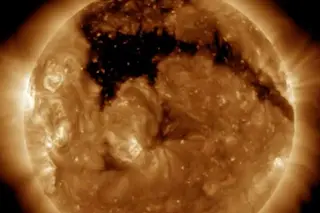The fiery behavior of a star can be observed as sound waves. A pair of astronomers has built an AI network to better study stars using these sound waves. (Credit: NASA)
Using artificial intelligence (AI) and sound waves, researchers have found a possible means of looking inside stars. It's based on the fact that stars aren't solid objects — far from it, in fact. They're intense, vibrating balls of plasma held together by their own gravity and with wildly energetic nuclear reactions at their core. Now, researchers say that they're beginning to find ways to discern the internal state of a star by looking at the vibrations that propagate from its core through to the surface.
The energy in stars is constantly in motion. The extreme, high energy of a star's core is always moving outwards towards the cold, low energy of space. These sound waves resonate throughout the star, ...














